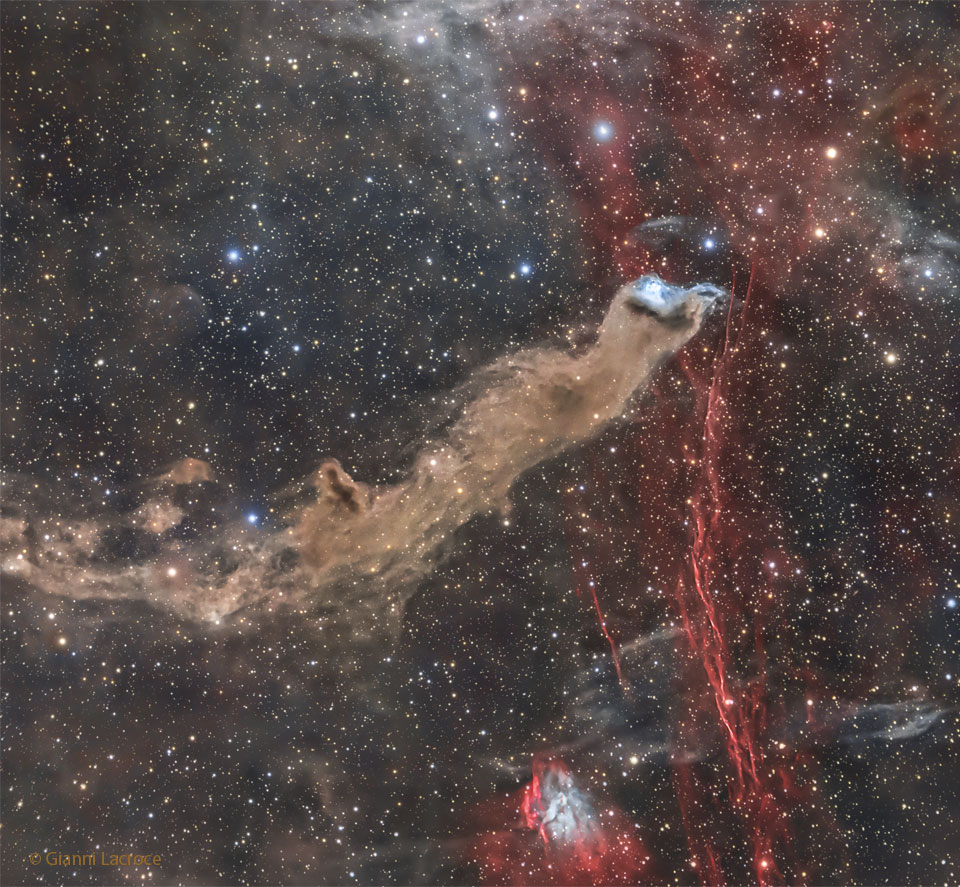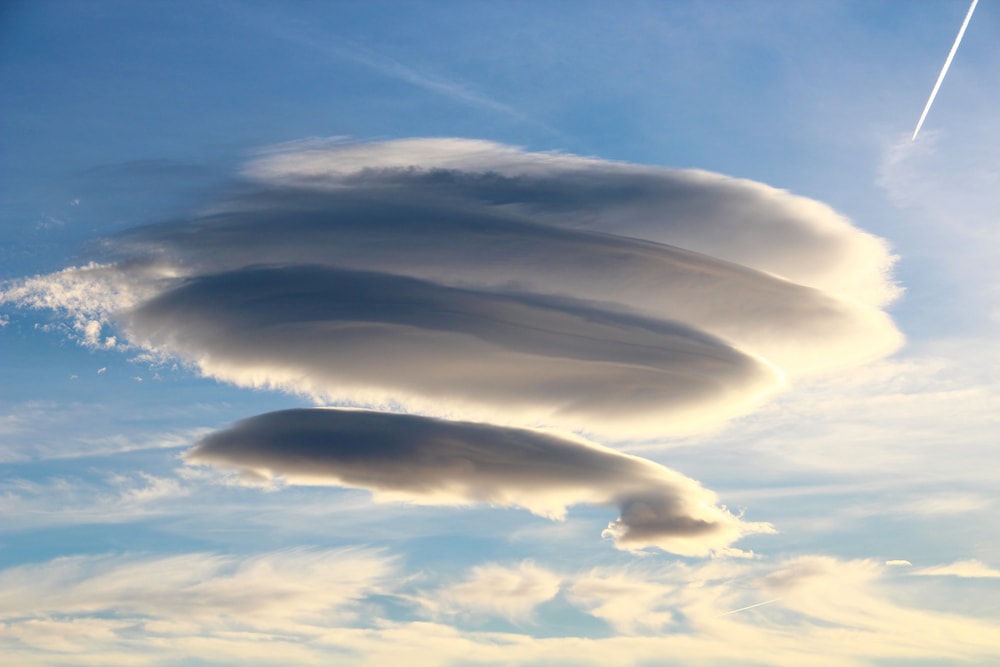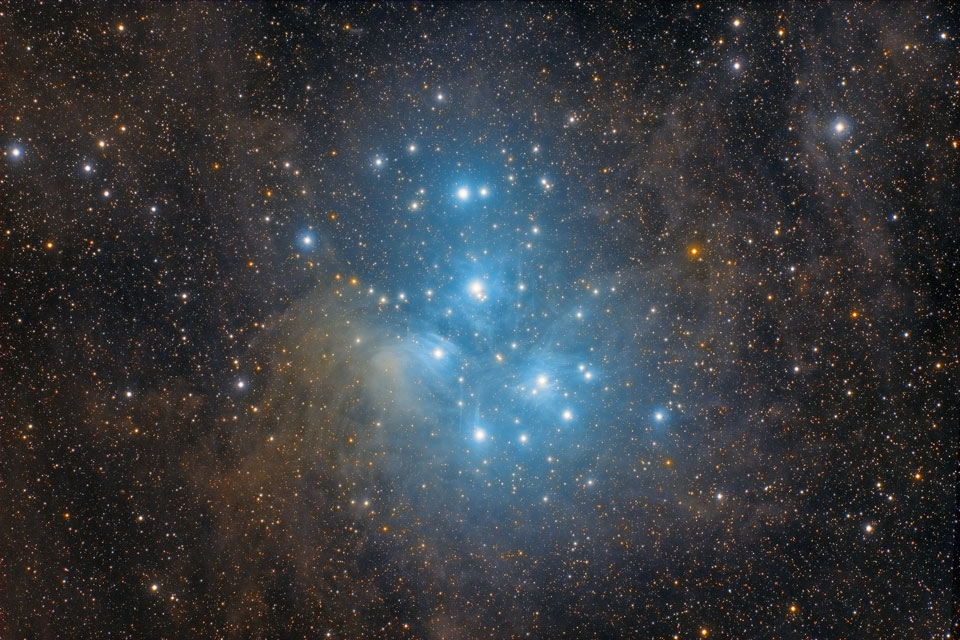Beautiful image! The red details really make this image shine. Yes, I do like red sometimes, when it doesn't take over too much from the other colors, and particularly when there is some blue in the image to set it off!
Note the small bluish gray lenticular cloud above the "head" (or the mouth?) of the Wolf Cave Nebula:
Lentcular clouds above the Wolf's Cave Nebula.
As for the star lighting up the Wolf's Cave Nebula in blue, we are told in the caption that the star just blundered in there:
APOD Robot wrote:
Interstellar dust in the region blocks light from background stars and scatters light from the embedded bright star, giving the end nebula its characteristic blue color. Though stars do form in molecular clouds, this star seems to have only accidentally wandered into the area, as its measured velocity through space is very different from the cloud's velocity.
That's curious. When I googled the star, BD+69 1231,
Simbad Astronomical Database called it a young stellar object. I don't expect a young stellar object that has just recently emerged from its birth cocoon to leave its birthplace and just blunder into the best possible
other birthplace for young stars some distance away.
The Wolf's Cave Nebula, vdB 152,
looks like it might give birth to low-mass stars. Note the dark dust lane just below the bright blue reflection nebula. We expect stars to form from concentrated molecular clouds which look dark because of the presence of dust.
Take a look at this APOD from 2013 by Roberto Colombari, featuring the Pleiades:
The Pleiades have indeed just blundered into an unrelated dust cloud and lit it up. But the stars of the Pleiades are not young stellar objects. They are mature stars, about 100 million years old, and the brightest of the Pleiades are evolving off the main sequence.
Note, too, that although we can see a lot of dust in Roberto Colombari's image, there is no
concentrated dark dust anywhere. There is nothing there that loks like a potential birthplace for stars.
But the Wolf's Cave Nebula looks like it might be just that.
Ann
 Wolf's Cave Nebula
Wolf's Cave Nebula


